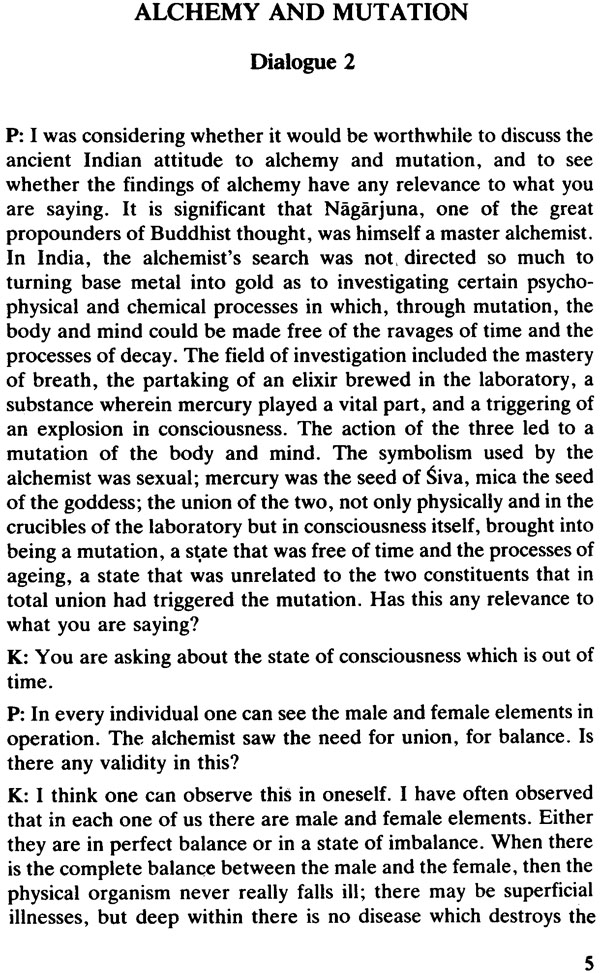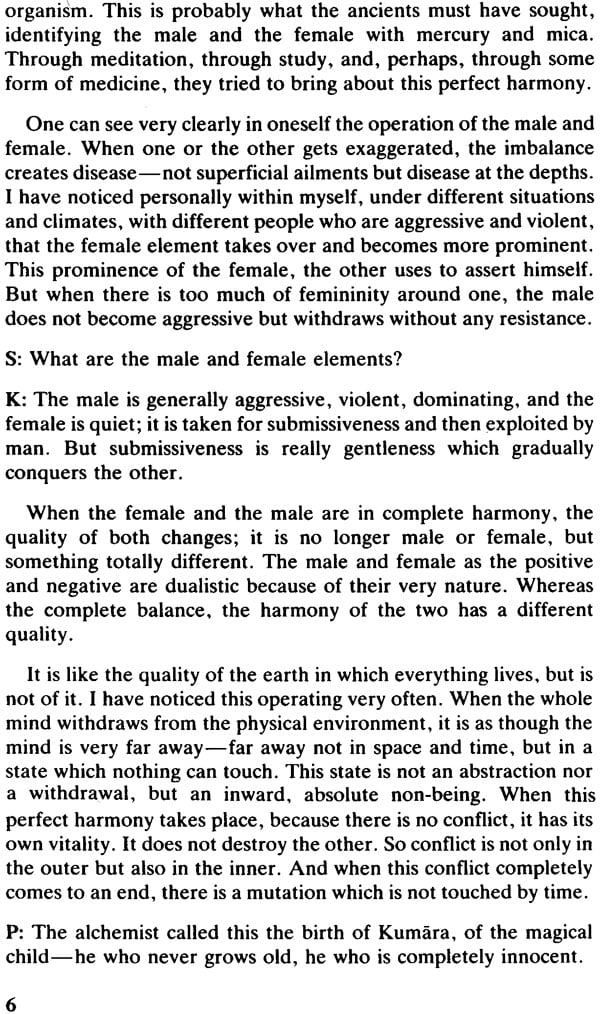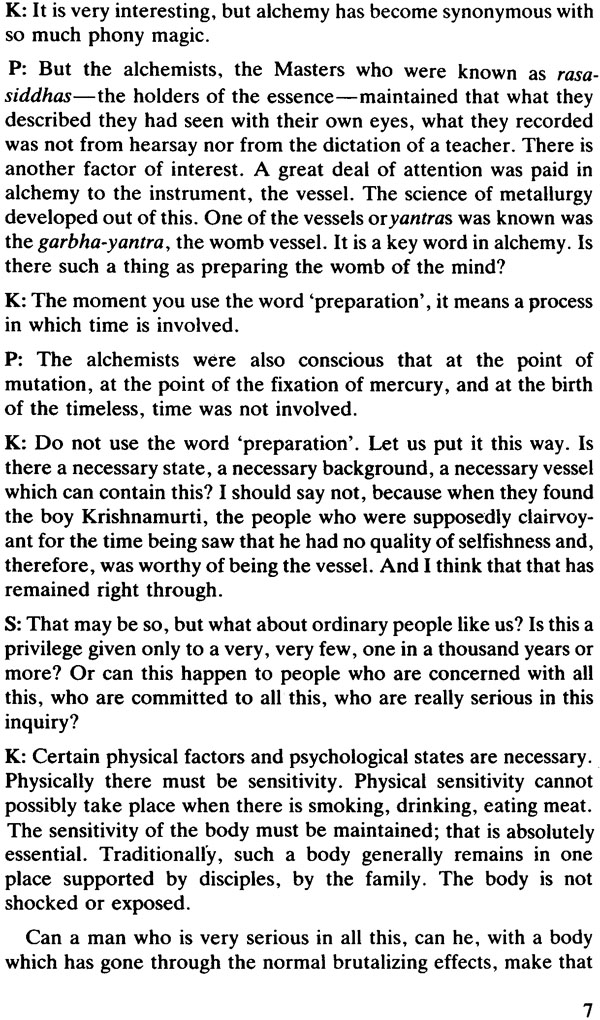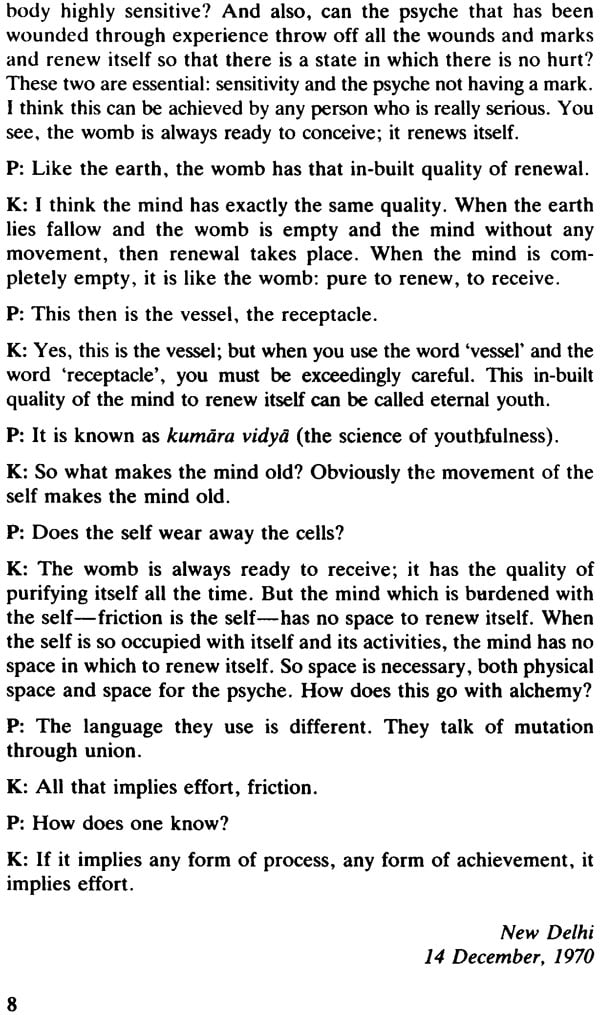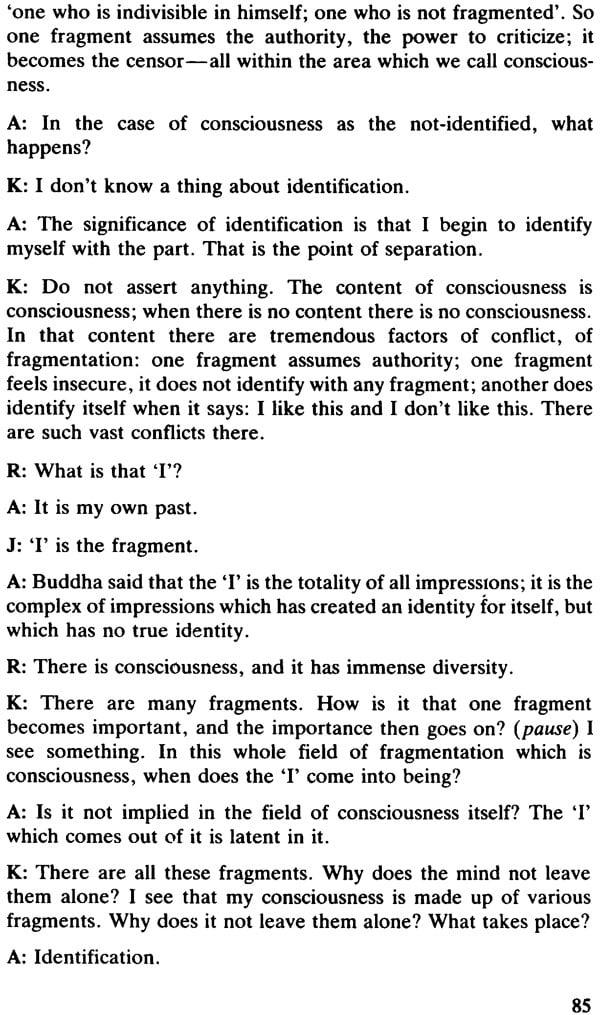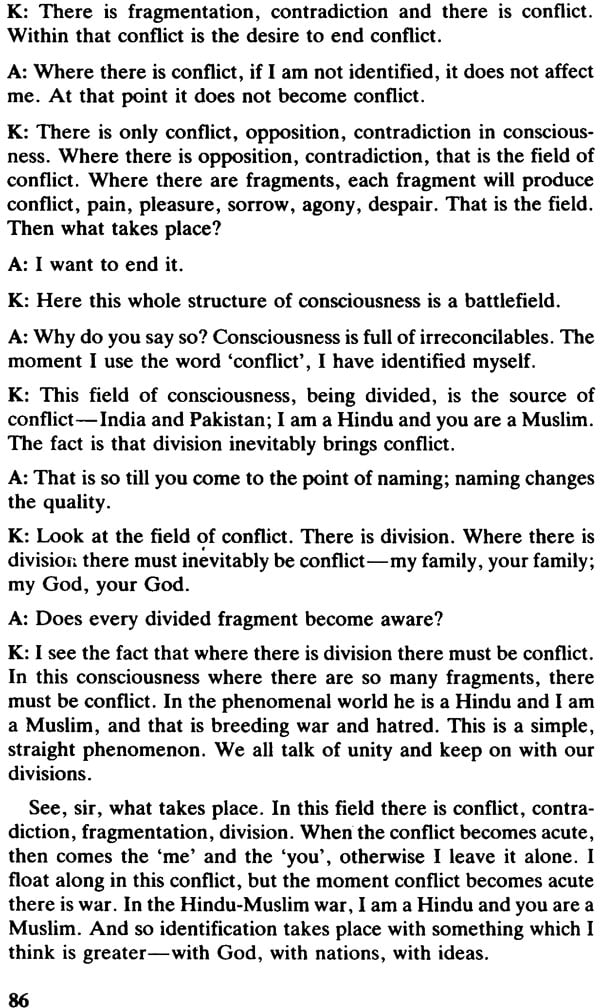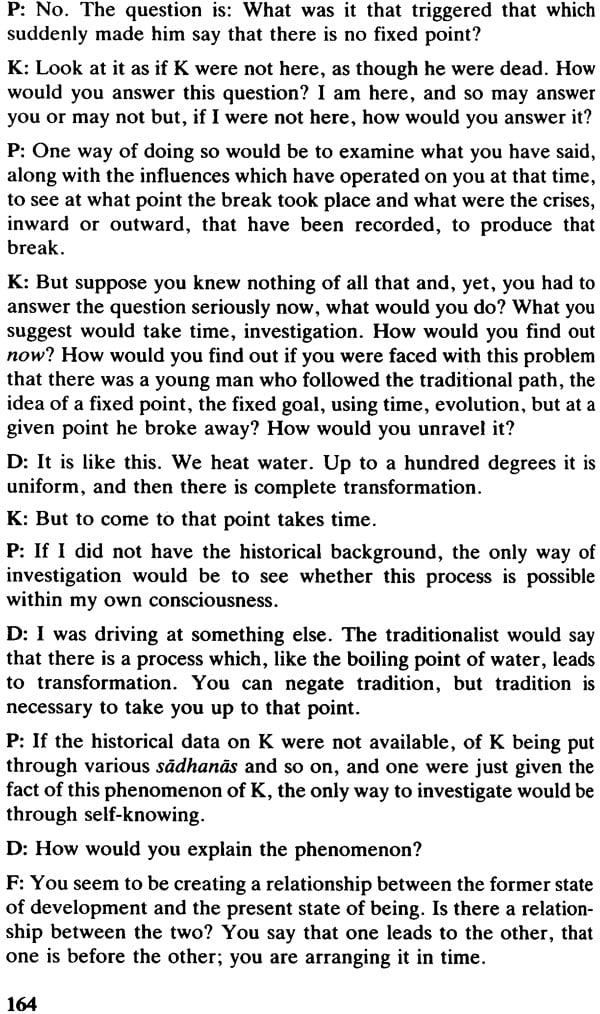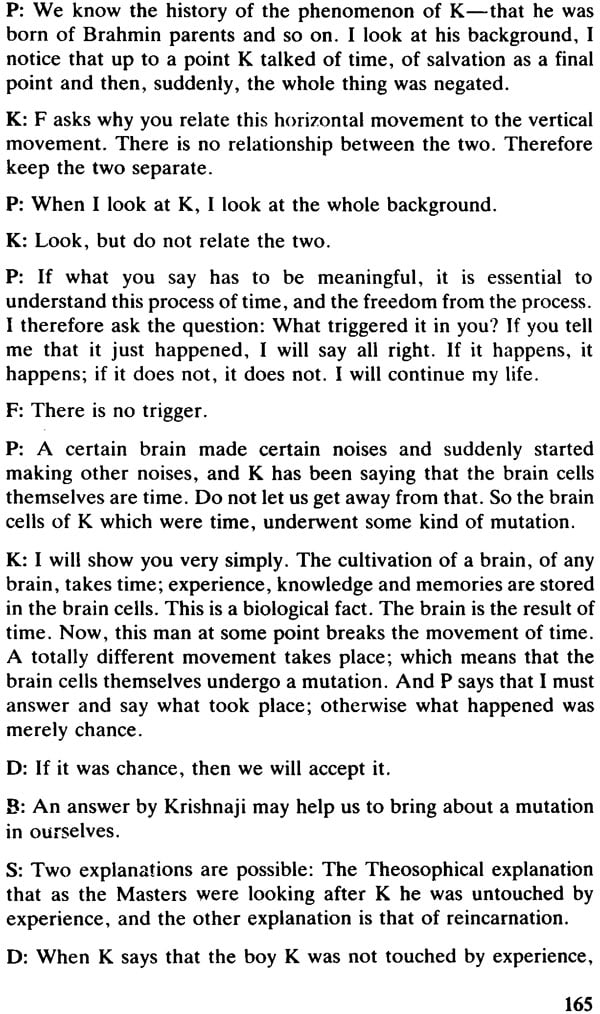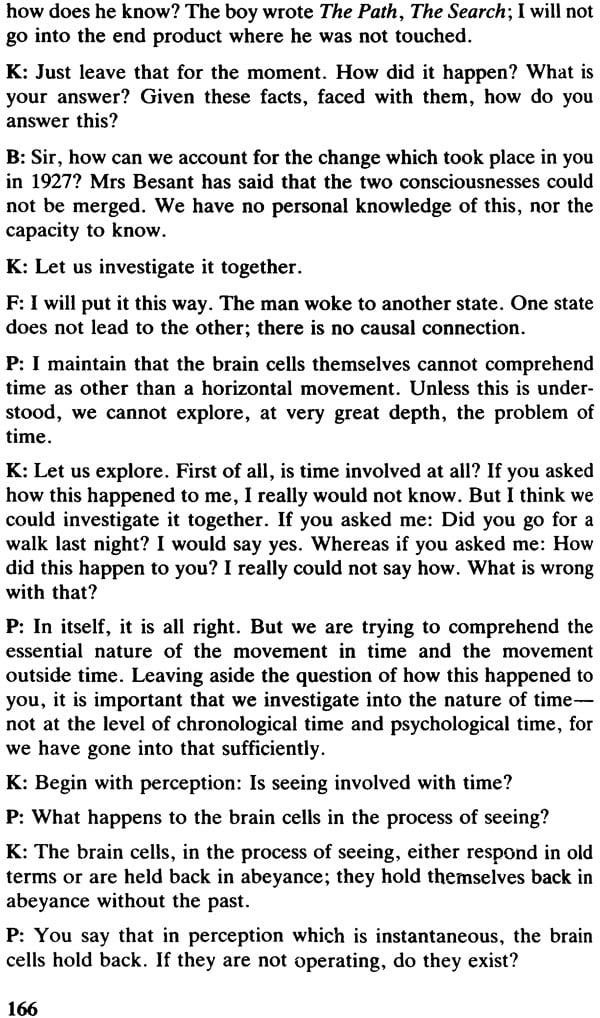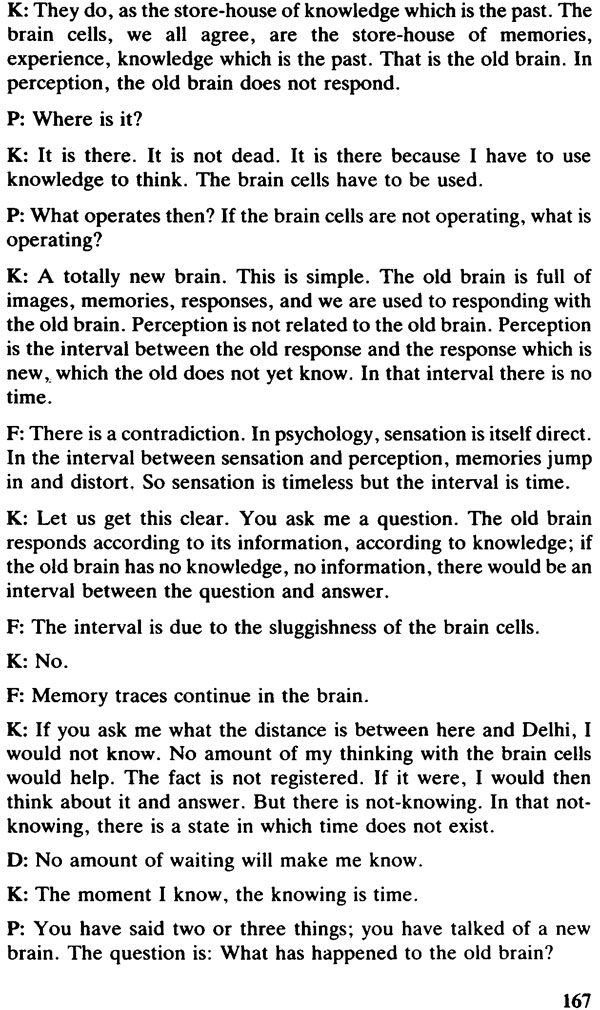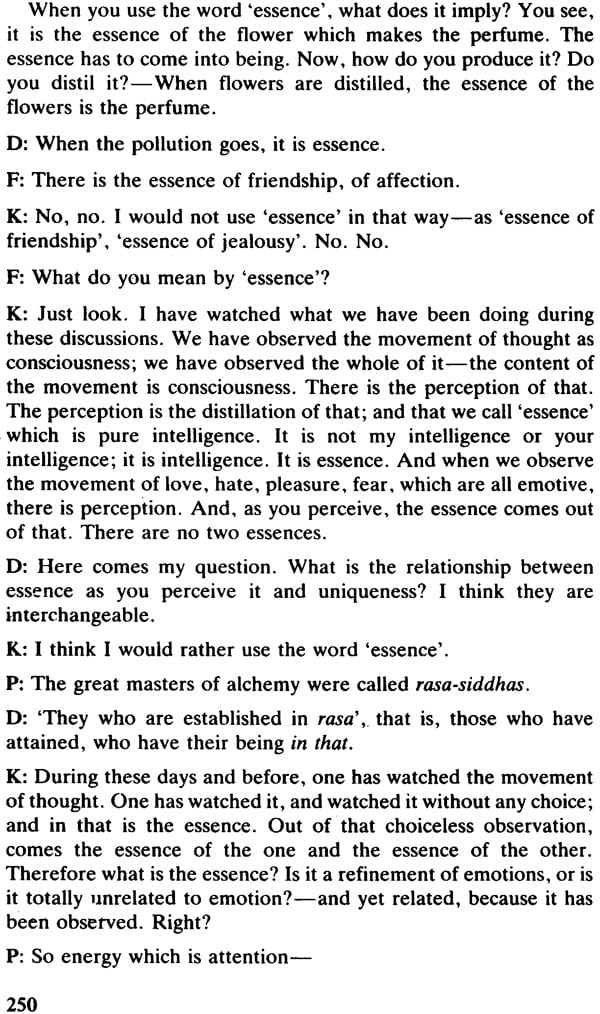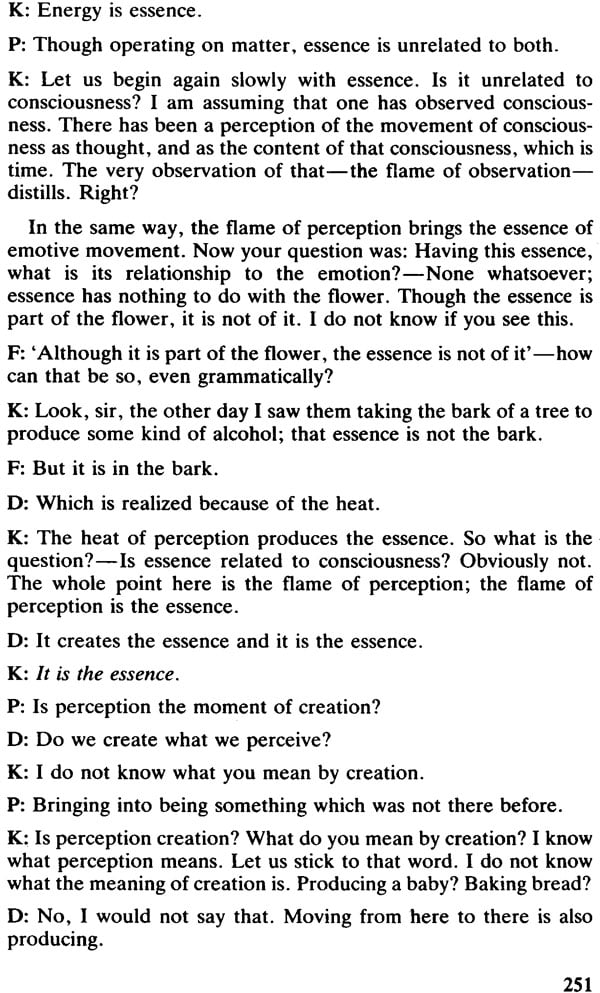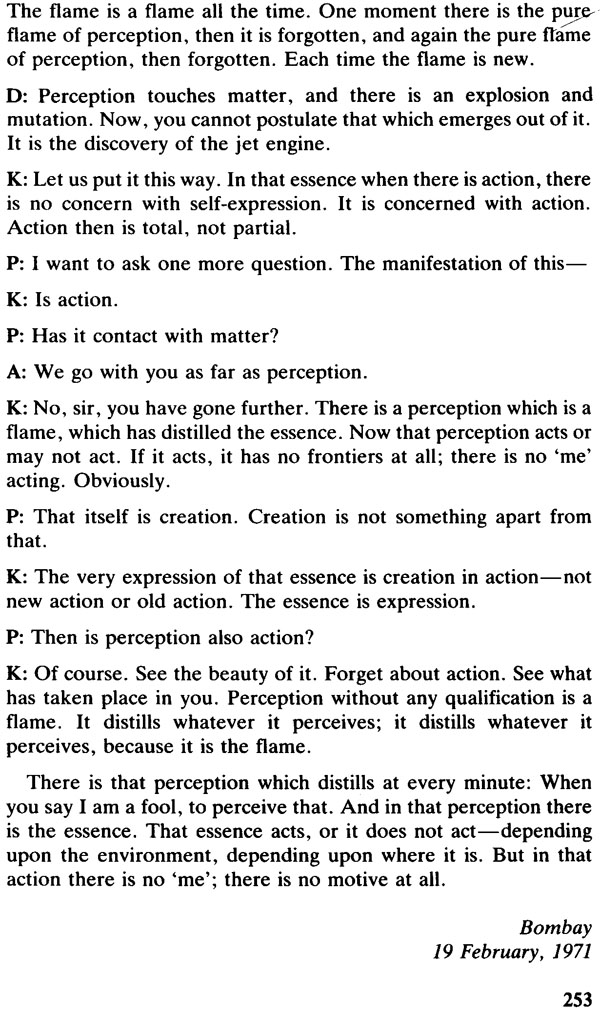
Tradition and Revolution (Dialogues With J. Krishnamurti)
Book Specification
| Item Code: | NAN199 |
| Publisher: | Krishnamuriti Foundation India |
| Language: | English |
| Edition: | 2013 |
| ISBN: | 8187326077 |
| Pages: | 260 |
| Cover: | Paperback |
| Other Details | 8.5 inch X 5.5 inch |
| Weight | 340 gm |
Book Description
Tradition and Revolution consists of a series of dialogues on ancient Indian religious and philosophical themes. Man's search for liberation, his ideas about the spiritual path and the goal, and the goal, and various traditional concepts are dealt with in contemporary idiom. Krishnamurti's concern is to bring out the experiential component behind these terms and to lead his listeners to the heart of the human predicament. These dialogues are a profound investigation into the nature of consciousness, an exploration of the mind, its movement and its frontiers, and of that which lies beyond.
These dialogues, the majority of which are on ancient India philosophical themes, were first published in 1972 and have subsequently been reprinted several times. In offering a second edition, we hope to introduce new readers to the characteristic style of spiritual inquiry that Krishnamurti was able to nourish. The participants in these dialogues were not rediscover the Indian philosophical past and, in some important sense which cannot be identified with scholarship, renew that past. In their attitude to the past, they were more like poets rediscovering a familiar language rather than like literary scholars anxious to get at the historical to what the participants were seeking.
Since 1947 J. Krishnamurthi, while in India, has been regularly meeting and holding dialogues with a group of people drawn from a variety of cultural backgrounds and disciplines-intellectuals, artist, sannyasis. During these years, the methodology of investigation has richened taken shape. What is revealed in these dialogues, as if through a microscope, is the extraordinary fluid, vast and subtle mind of Krishnamurthi and the operational process of perception. These dialogues are not, however, questions and answers. They are an investigation into the structure and nature of consciousness, an exploration of the mind, its movement, its frontiers and that which lies beyond. It is also an approach to the way of mutation.
There has been in these dialogues a coming together of several totally varied and differently conditioned minds. There has been a deep challenging of the mind of Krishnamurti, a relentless questioning that has opened up the depth of the human psyche. One is witness not only to the expanding and the deepening of the 'limitless', but also to the impact on the limited mind. This very inquiry leaves the mind flexible, freeing it from the immediate past and from the grooves of centuries of conditioning.
In these dialogues, Krishnamurti starts his questioning from a totally tentative position, from a state his questioning from a totally tentative position, from a state of 'not-knowing', and, therefore, in a sense, he starts at the same level as the participants. During the discussion, various analytical inquires are made which are tentative and explorative. There is a questioning without seeking immediate solutions: a step by step observation of the processes of thought and its unfolding-a movement of penetration and withdrawal, every movement plunging attention deeper and deeper into recesses of the mind. A delicate wordless communication takes place; an exposure of the movement of negation as it meets the positive movement of thought. There is a 'seeing' of fact, of 'what is', and the mutation of 'what is'. This is again perceived from various directions to examine its validity.
The nature of duality and non-duality is revealed in simple language. In that state of questioning, a state the questioner, the experience, has ceased, in flash, 'truth' is revealed. It is a state of total non-thought. Krishnamurthi says:
The mind, which is the vessel of movement, is completely quiet when that movement has no form, no 'me', no vision. In it there is no memory. Then the brain cells undergo a change. The brain cells are used to movement in time; they are the residue of time. And time is movement within the space it creates as it moves.
When there is no movement, there is a tremendous focus of energy. So mutation is the understanding of movement, and the ending of movement in the brain cells themselves. (Dialogue 6)
The revelation f the instant of mutation, of 'what is', provides a totally new dimension to the whole field of intellectual and religious inquiry.
There may be repetition in the dialogues, but they have not been eliminated, because to do so would have inhibited the understanding of the nature of consciousness and the method of inquiry.
We feel that these discussions will be of major assistance to those seeking a clue to the understanding of the self and of life.
Contents
| Preface | vii | |
| Dialogues in New Delhi | ||
| 1 | The flame of sorrow | 1 |
| 2 | Alchemy and mutation | 5 |
| 3 | The containment of evil | 9 |
| 4 | The awakening of energy | 14 |
| 5 | The first step is the last step | 20 |
| 6 | Energy and transformation | 25 |
| 7 | The observer and 'what is' | 30 |
| 8 | The backward-flowing movement | 37 |
| 9 | Time and deterioration | 44 |
| 10 | Dying and living | 50 |
| 11 | Beauty and perception | 56 |
| Dialogues in Madras | ||
| 12 | The paradox of causation | 63 |
| 13 | Tradition nad knowledge | 73 |
| 14 | Conflict and consciousness | 81 |
| 15 | The nature of exploration | 90 |
| 16 | Order and ideation | 98 |
| 17 | Object, knowledge and perception | 103 |
| 18 | Energy and fragmentation | 110 |
| 19 | Freedom and the field | 117 |
| 20 | The matrix of tradition | 126 |
| 21 | The guru, tradition and freedom | 136 |
| 22 | Freedom and the prison | 145 |
| 23 | Stability and knowledge | 154 |
| Dialogues in Bombay | ||
| 24 | The brain-cells and mutation | 163 |
| 25 | God | 175 |
| 26 | Energy, entropy and life | 189 |
| 27 | Intelligence and the instrument | 201 |
| 28 | Right communication | 214 |
| 29 | Biological survival and intelligence | 229 |
| 30 | The mind and the heart | 243 |
